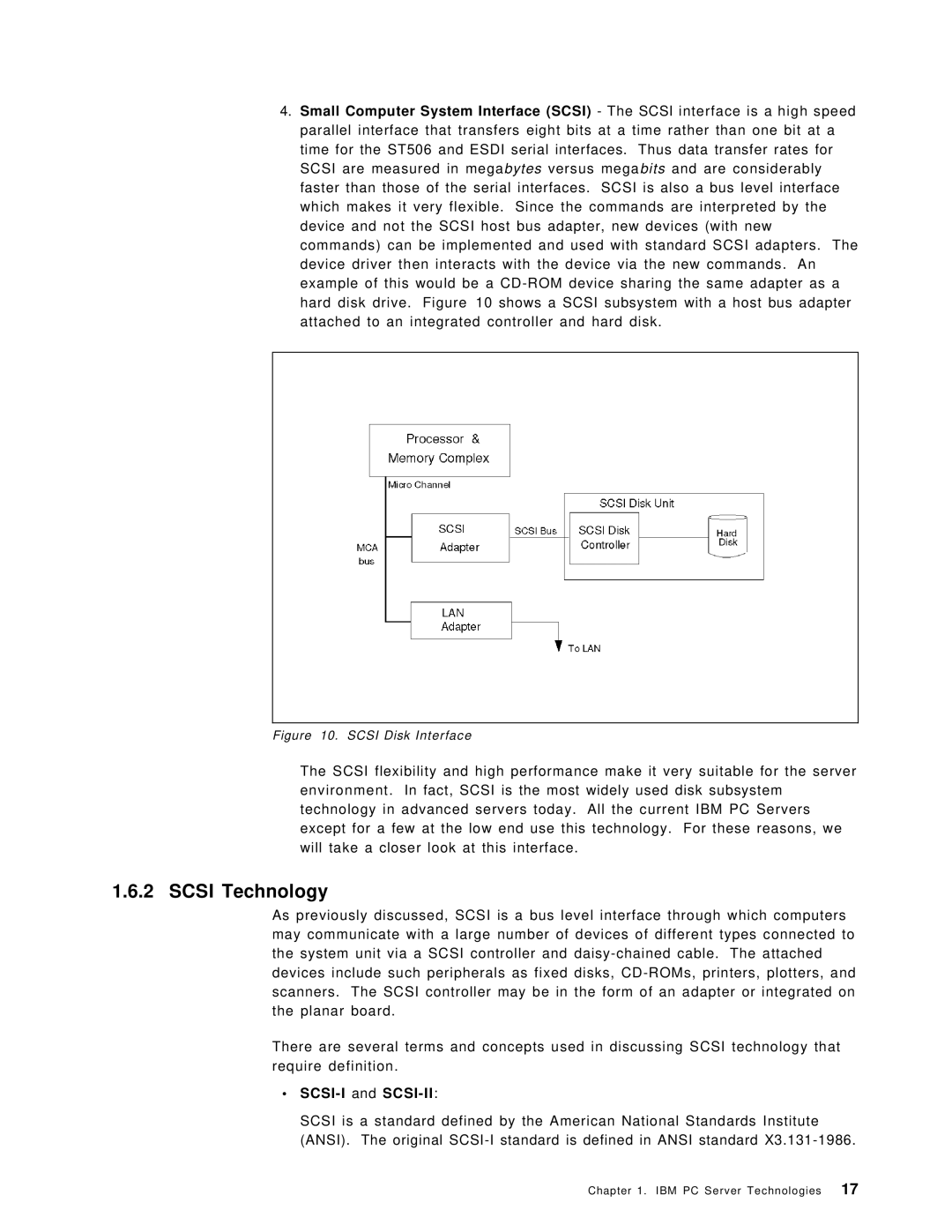
4.Small Computer System Interface (SCSI) - The SCSI interface is a high speed parallel interface that transfers eight bits at a time rather than one bit at a time for the ST506 and ESDI serial interfaces. Thus data transfer rates for SCSI are measured in megabytes versus megabits and are considerably faster than those of the serial interfaces. SCSI is also a bus level interface which makes it very flexible. Since the commands are interpreted by the device and not the SCSI host bus adapter, new devices (with new commands) can be implemented and used with standard SCSI adapters. The device driver then interacts with the device via the new commands. An example of this would be a
Figure 10. SCSI Disk Interface
The SCSI flexibility and high performance make it very suitable for the server environment. In fact, SCSI is the most widely used disk subsystem technology in advanced servers today. All the current IBM PC Servers except for a few at the low end use this technology. For these reasons, we will take a closer look at this interface.
1.6.2 SCSI Technology
As previously discussed, SCSI is a bus level interface through which computers may communicate with a large number of devices of different types connected to the system unit via a SCSI controller and
There are several terms and concepts used in discussing SCSI technology that require definition.
∙SCSI-I and SCSI-II:
SCSI is a standard defined by the American National Standards Institute (ANSI). The original
Chapter 1. IBM PC Server Technologies 17
